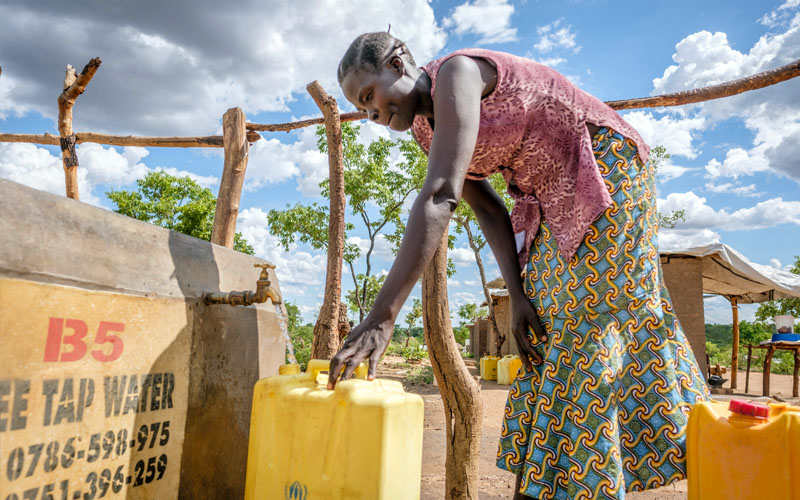Leveraging technology to ensure water provision in refugee camps
Published September 2020

To better monitor and ensure the timely delivery of water supplies to refugee camps in Uganda, UNHCR set up a digital monitoring system to receive real-time data on how water was being delivered and consumed across the country.
At the height of the massive influx of South Sudanese refugees into Uganda in 2017, UNHCR faced the challenge of delivering water to the new arrivals, who were mostly crossing into remote and underdeveloped areas. A fleet of 630 trucks was used to supply water at a prohibitive cost.
David Githiri was in charge of the technical team delivering services to refugees and host communities in Uganda.
“Safe drinking water was needed to prevent death and disease but delivering water by truck is expensive and notoriously difficult to monitor,” explained David. “We had to account for every dollar that was spent, but this presented major challenges.”
To tackle these changes, UNHCR colleagues set out to find an innovative way of monitoring water truck deliveries.
In creating the system, the team looked at a range of possible solutions before settling on technologies that had been used in the oil industry and setting out to apply them to the water sector.
The system uses a series of networked, ultra-sonic water-level sensors that are installed in the tanks of water delivery trucks as well as static water tanks in refugee settlements to provide real-time data on water deliveries and consumption. It is based on the “Internet of Things” – physical objects fitted with sensors in order to connect and exchange data over the Internet.
The devices, which cost around 50 euros each, send their readings to a central gateway similar to a mobile phone mast. The gateways have a range of 30 kilometres and can collate data from up to 20,000 individual sensors, meaning a single gateway can cover all the water tanks and trucks serving an entire refugee settlement.
The data is then fed to an online dashboard which gathers information from all the active gateways in a country or region, allowing Githiri and colleagues to see in real time how much water is being delivered and consumed across the entire country.
“It has improved service delivery and reduced shortages, because we are easily able to monitor deliveries and consumption and address potential shortages before they happen,” Githiri said. “The refugees are happier because they receive the services when they need them when it comes to water supplies.”
The solution has since been rolled out to refugee and displacement camps in different countries, including Iraq, Rwanda, Tanzania and Kenya.
In September 2020, the project chosen as one of the five winners of the European Commission’s EIC Horizon Prize for Affordable High-Tech for Humanitarian Aid, claiming the prize in the water, sanitation and hygiene category.
Read the original story about this project.
